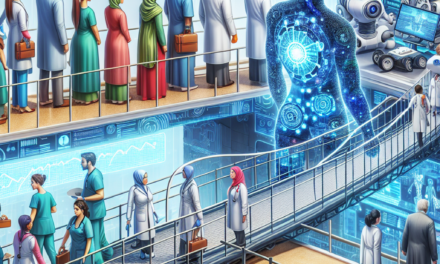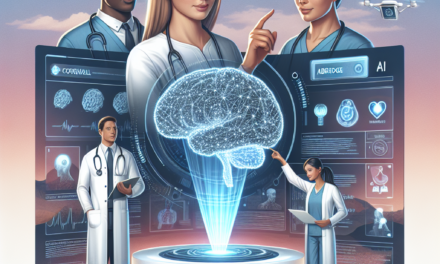GOP Proposes $1.5 Trillion Cuts, Targeting Healthcare Funding
The recent proposal by the Republican Party to cut $1.5 trillion from federal spending has sparked intense debate across the political spectrum. With a significant portion of these cuts aimed at healthcare funding, the implications for millions of Americans could be profound. This article delves into the details of the proposed cuts, the rationale behind them, and the potential consequences for healthcare services in the United States.
Understanding the GOP’s Proposal
The GOP’s proposal to cut $1.5 trillion from federal spending is part of a broader strategy to reduce the national deficit and curb government spending. The party argues that excessive spending has led to unsustainable debt levels, which threaten the economic stability of the country. The proposed cuts target various sectors, but healthcare funding is at the forefront of this initiative.
According to the GOP, the rationale for cutting healthcare funding is multifaceted:
- Reducing Government Spending: The GOP believes that reducing spending on healthcare programs like Medicaid and Medicare will help balance the federal budget.
- Encouraging Private Sector Solutions: The party argues that cutting government funding will encourage private sector innovation and competition in healthcare.
- Addressing Fraud and Waste: The GOP claims that there is significant waste and fraud in government healthcare programs, and cutting funding will force a reevaluation of these systems.
However, critics argue that these cuts could lead to devastating consequences for vulnerable populations who rely on government-funded healthcare programs. The debate continues as stakeholders from various sectors weigh in on the potential impacts of these proposed cuts.
The Impact on Medicaid
Medicaid, a joint federal and state program that provides healthcare coverage to low-income individuals and families, is one of the primary targets of the proposed cuts. The GOP’s plan could significantly reduce funding for Medicaid, which currently serves over 70 million Americans.
Here are some key points regarding the potential impact of cuts to Medicaid:
- Access to Care: Reducing funding for Medicaid could lead to millions losing their coverage, resulting in decreased access to essential healthcare services.
- State Budgets: States that have expanded Medicaid under the Affordable Care Act (ACA) may face budget shortfalls, leading to cuts in other critical services.
- Health Outcomes: Studies have shown that Medicaid expansion has led to improved health outcomes for low-income populations. Cuts could reverse these gains.
For example, a study published in the New England Journal of Medicine found that states that expanded Medicaid saw a 6.1% reduction in mortality rates among low-income adults. If funding is cut, these positive trends could be jeopardized.
Moreover, the impact of Medicaid cuts would not be felt equally across the country. States with higher poverty rates and larger populations of uninsured individuals would be disproportionately affected. This could exacerbate existing health disparities and lead to a public health crisis in some regions.
Medicare and the Aging Population
Medicare, the federal health insurance program for people aged 65 and older, is another critical area that could be affected by the proposed cuts. With an aging population, the demand for Medicare services is expected to rise significantly in the coming years.
The implications of cuts to Medicare funding include:
- Increased Out-of-Pocket Costs: Cuts to Medicare could lead to higher premiums and out-of-pocket costs for beneficiaries, making healthcare less affordable for seniors.
- Reduced Benefits: Proposed cuts may result in reduced benefits or coverage for essential services, such as preventive care and prescription drugs.
- Impact on Providers: Healthcare providers who rely on Medicare reimbursement may face financial strain, leading to potential closures or reduced services.
According to the Kaiser Family Foundation, nearly 60 million Americans are enrolled in Medicare, and this number is expected to grow as the baby boomer generation ages. Cuts to this program could have far-reaching consequences for the health and well-being of millions of seniors.
Furthermore, the aging population is already facing challenges related to chronic diseases and complex health needs. Reducing funding for Medicare could hinder access to necessary treatments and exacerbate health issues among older adults.
The Role of Private Insurance
One of the arguments made by proponents of the proposed cuts is that reducing government funding will encourage the growth of private insurance markets. The GOP believes that a more competitive environment will lead to lower costs and improved services.
However, the reality of the private insurance market is more complex:
- Affordability Issues: Many Americans struggle to afford private insurance premiums, especially those with pre-existing conditions or low incomes.
- Coverage Gaps: Private insurance plans often come with limitations and exclusions that can leave individuals without necessary coverage.
- Market Instability: Reducing government support for healthcare could lead to instability in the private insurance market, resulting in higher costs and fewer options for consumers.
For instance, after the ACA was implemented, the uninsured rate dropped significantly, largely due to expanded Medicaid and subsidies for private insurance. If government funding is cut, many fear that the progress made in reducing the uninsured rate could be reversed.
Moreover, the reliance on private insurance can create disparities in access to care. Those who can afford comprehensive plans may receive high-quality care, while others may be left with inadequate coverage or no coverage at all.
Public Health Implications
The proposed cuts to healthcare funding could have significant public health implications. Access to healthcare services is crucial for maintaining population health, and reductions in funding could lead to a range of negative outcomes.
Some potential public health implications include:
- Increased Disease Burden: Reduced access to preventive care and early treatment could lead to higher rates of chronic diseases and infectious diseases.
- Strain on Emergency Services: As individuals lose access to regular healthcare, they may turn to emergency services for care, leading to increased strain on hospitals and emergency rooms.
- Impact on Mental Health: Cuts to mental health services could exacerbate mental health issues, leading to increased rates of depression, anxiety, and suicide.
For example, a report from the Centers for Disease Control and Prevention (CDC) highlighted that access to preventive services, such as vaccinations and screenings, is essential for reducing the burden of disease. Cuts to healthcare funding could hinder these services, leading to outbreaks of preventable diseases.
Additionally, the COVID-19 pandemic has underscored the importance of a robust public health system. Cuts to healthcare funding could weaken the ability of public health agencies to respond to future health crises, putting communities at risk.
Conclusion: The Stakes of Healthcare Funding Cuts
The GOP’s proposal to cut $1.5 trillion from federal spending, particularly targeting healthcare funding, raises significant concerns about the future of healthcare access and quality in the United States. While the party argues that these cuts are necessary for fiscal responsibility, the potential consequences for millions of Americans cannot be overlooked.
As we have explored, the impact of these cuts on Medicaid and Medicare could lead to reduced access to care, increased costs for beneficiaries, and negative health outcomes for vulnerable populations. The reliance on private insurance may not provide a viable solution, as affordability and coverage gaps remain significant issues. Furthermore, the public health implications of reduced funding could strain healthcare systems and exacerbate health disparities.
In summary, the proposed cuts to healthcare funding represent a critical juncture for the future of healthcare in America. Policymakers must carefully consider the potential consequences of these cuts and prioritize the health and well-being of all Americans as they navigate the complexities of federal spending and healthcare policy.





